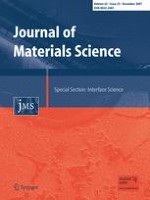01-12-2007
Three-dimensional computer modeling of slag cement hydration
Published in: Journal of Materials Science | Issue 23/2007
Log inActivate our intelligent search to find suitable subject content or patents.
Select sections of text to find matching patents with Artificial Intelligence. powered by
Select sections of text to find additional relevant content using AI-assisted search. powered by
